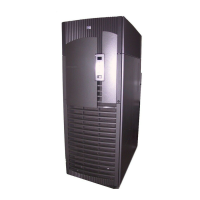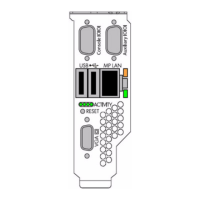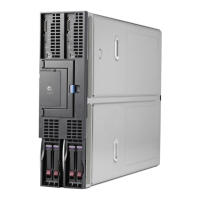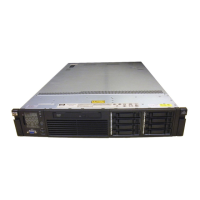Do you have a question about the HP Integrity Superdome X and is the answer not in the manual?
Details the main parts of the HPE Integrity Superdome X enclosure.
Explains the power input and supply configuration of the system.
Describes how the system is managed via Onboard Administrators (OA).
Details the specifications and types of server blades used in the system.
Outlines the input/output capabilities via mezzanine cards and FlexLOMs.
Provides a visual and functional overview of the compute enclosure's components.
Lists the physical dimensions and weights of system components.
Details the requirements and compatibility for rack mounting.
Outlines power options, voltages, and receptacle requirements.
Specifies temperature and humidity limits for operation and storage.
Explains the system's cooling needs and airflow management.
Lists general Hewlett Packard Enterprise informational websites.
Details how to access support, updates, and self-repair programs.
Lists essential security practices before performing firmware updates.
Describes using HP SUM utility for firmware deployment and dependency management.
Provides steps for updating firmware through manual procedures.
Lists the operating systems compatible with the Integrity Superdome X.
Provides guidance for using Windows Server on the system.
Explains how partitions are identified using numbers and names.
Describes the numeric identifier for partitions and its constraints.
Details the string-based identifier for partitions and naming conventions.
Introduces the systematic approach to diagnosing system issues.
Details methods for connecting to the Onboard Administrator (OA).
Explains how to collect data for diagnosing system failures.
Addresses common errors and diagnostic steps related to CPU issues.
Covers errors originating from CPU to memory buffers or memory buffers to DIMMs.
Guides on identifying and resolving firmware-related problems.
Provides methods for diagnosing issues with system partitions.
Addresses network setup and connectivity problems.
Covers diagnostic steps for Machine Check Aborts (MCAs).
A diagnostic tool for analyzing system errors and generating events.
Instructions for connecting to the OA via Telnet or SSH.
Steps for connecting to the OA via a serial port for debugging.
An overview of the Unified Extensible Firmware Interface and its role.
Lists and defines common commands used in the UEFI Shell environment.
Describes the OA's role in server support, administration, and monitoring.
Details how to connect a PC to the OA's Ethernet service port.
Explains connecting a PC via serial cable for debugging.
Introduces the Insight Display's function for configuration and health status.
Explains how to use the arrow buttons to navigate menus.
Displays the overall enclosure health status and error counts.
Describes common errors encountered during installation and configuration.
Directs users to resources for product warranty details.
Provides links to regulatory compliance information.
Details the main parts of the HPE Integrity Superdome X enclosure.
Explains the power input and supply configuration of the system.
Describes how the system is managed via Onboard Administrators (OA).
Details the specifications and types of server blades used in the system.
Outlines the input/output capabilities via mezzanine cards and FlexLOMs.
Provides a visual and functional overview of the compute enclosure's components.
Lists the physical dimensions and weights of system components.
Details the requirements and compatibility for rack mounting.
Outlines power options, voltages, and receptacle requirements.
Specifies temperature and humidity limits for operation and storage.
Explains the system's cooling needs and airflow management.
Lists general Hewlett Packard Enterprise informational websites.
Details how to access support, updates, and self-repair programs.
Lists essential security practices before performing firmware updates.
Describes using HP SUM utility for firmware deployment and dependency management.
Provides steps for updating firmware through manual procedures.
Lists the operating systems compatible with the Integrity Superdome X.
Provides guidance for using Windows Server on the system.
Explains how partitions are identified using numbers and names.
Describes the numeric identifier for partitions and its constraints.
Details the string-based identifier for partitions and naming conventions.
Introduces the systematic approach to diagnosing system issues.
Details methods for connecting to the Onboard Administrator (OA).
Explains how to collect data for diagnosing system failures.
Addresses common errors and diagnostic steps related to CPU issues.
Covers errors originating from CPU to memory buffers or memory buffers to DIMMs.
Guides on identifying and resolving firmware-related problems.
Provides methods for diagnosing issues with system partitions.
Addresses network setup and connectivity problems.
Covers diagnostic steps for Machine Check Aborts (MCAs).
A diagnostic tool for analyzing system errors and generating events.
Instructions for connecting to the OA via Telnet or SSH.
Steps for connecting to the OA via a serial port for debugging.
An overview of the Unified Extensible Firmware Interface and its role.
Lists and defines common commands used in the UEFI Shell environment.
Describes the OA's role in server support, administration, and monitoring.
Details how to connect a PC to the OA's Ethernet service port.
Explains connecting a PC via serial cable for debugging.
Introduces the Insight Display's function for configuration and health status.
Explains how to use the arrow buttons to navigate menus.
Displays the overall enclosure health status and error counts.
Describes common errors encountered during installation and configuration.
Directs users to resources for product warranty details.
Provides links to regulatory compliance information.
| Product Name | HP Integrity Superdome X |
|---|---|
| Category | Server |
| Maximum Processors | 8 |
| Memory Type | DDR3 |
| Processor | Intel Itanium Processor 9500 series |
| Storage Options | SAS, SATA, SSD |
| Operating System Support | HP-UX, Linux, Windows |
| Form Factor | Rack |











